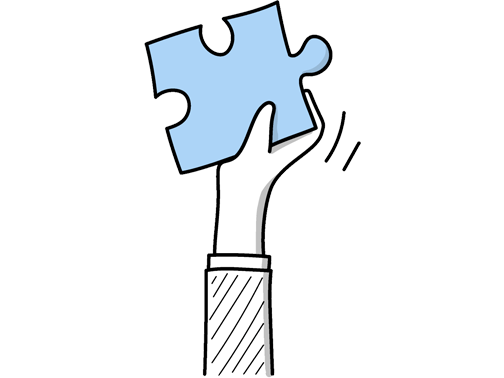Timber machinist Interview Questions (2025 Guide)
Find out common Timber machinist questions, how to answer, and tips for your next job interview
Practice Interviews Online - Identify your strengths and weakness in a realistic Timber machinist mock interview, under 10 minutes
Practice Now »Timber machinist Interview Questions
This interview question aims to see if you prioritize safety and understand the risks in a timber machining workshop. You need to say that you always follow safety protocols, use protective gear, keep machines well-maintained, and stay alert to prevent accidents.
Example: To keep the workshop safe, I always start by checking that all machines have their guards in place and are well-maintained. I make sure everyone wears the right protective gear, like goggles and ear defenders. Clear walkways and good lighting help prevent trips or mistakes. I also encourage the team to speak up if they spot any hazards, so we can address issues before they become a problem.
Interviewers ask this to see how you identify problems and solve them systematically. You need to say you first check the machine’s settings and condition, then isolate the issue step-by-step while considering safety and efficiency.
Example: When a machine isn’t working right, I start by carefully observing its operation to pinpoint what feels off. Then, I check for common issues like alignment or wear and tear. For example, once a cutter wasn’t smooth, and I found a dull blade was the culprit. I take a methodical approach, staying calm and working step-by-step until the problem is fixed and the machine runs smoothly again.
Interviewers ask this question to see if you prioritize quality and attention to detail in your work. You need to say that you carefully follow specifications, regularly check measurements, and maintain your tools to ensure every cut is precise and accurate.
Example: To ensure precision, I start by carefully measuring and setting up the machinery before each job. I regularly check my work against the specifications as I go along, making small adjustments when needed. For example, when crafting furniture parts, I double-check dimensions to avoid any fitting issues later. Maintaining a clean workspace and sharp tools also helps keep everything consistent throughout the process.
Employers ask this question to gauge your hands-on experience and familiarity with the specific machines they use. You need to clearly state which timber machining equipment you have worked with, highlighting your proficiency and any relevant skills.
Example: I have extensive experience working with a variety of timber machining equipment, such as thicknessers, band saws, and spindle moulders. I'm comfortable setting up and operating these machines safely and efficiently, ensuring precise cuts and smooth finishes. For example, in my previous role, I regularly used the planer to prepare timber for furniture production, paying close attention to detail and maintaining consistent quality throughout.
Interviewers ask this to ensure you prioritize safety and understand the risks involved in operating heavy machinery. You need to say that you always wear protective gear, follow lockout/tagout procedures, and inspect machines before use to prevent accidents.
Example: When operating timber machinery, I always start by checking the equipment for any faults and ensure guards are in place. I keep my work area tidy to avoid accidents and wear the right protective gear, like gloves and eye protection. Staying focused is key—I avoid distractions and follow safe handling practices, like feeding timber at a steady pace, to keep everything running smoothly and safely.
What they want to know is if you understand the critical steps to ensure accuracy and safety when starting a new job. You need to explain checking the machine settings, calibrating measurements, and confirming the timber specifications before beginning.
Example: When setting up a timber machine for a new job, I start by reviewing the job specifications carefully to understand the requirements. Then, I select and install the right blades or cutters, making precise adjustments to ensure accuracy. I always test the setup on a scrap piece to check the measurements and finish before starting production, which helps avoid mistakes and keeps everything running smoothly.
This interview question helps the employer see how well you work in a team, which is crucial for safety and efficiency in timber machining. In your answer, briefly describe the task, your role, and how you communicated or coordinated with others to complete it successfully.
Example: In my previous role, I worked closely with the design and assembly teams to ensure precision cuts matched the project specs. For one job, we coordinated timing carefully so my machining aligned perfectly with their build schedule. Clear communication was key, and by sharing updates regularly, we avoided delays and delivered a quality product on time. It showed me how essential teamwork is in this line of work.
What they want to know is how you work well with others to keep the team effective and motivated. You should say you communicate clearly, support your teammates, and stay focused on the common goal.
Example: I focus on clear communication and supporting my teammates, especially when deadlines are tight. For example, if a colleague is struggling with a machine setup, I step in to help or share tips I’ve learned. Keeping things positive and practical helps us stay efficient and motivated, which makes the whole process smoother and more enjoyable for everyone involved.
Interviewers ask this question to see if you can work well with others and maintain a safe, productive workshop environment. In your answer, emphasize that you listen carefully to others, stay calm under pressure, and work together to find practical solutions that benefit the team.
Example: In a workshop, clear communication is key. If disagreements arise, I listen carefully to understand everyone’s view, staying calm to keep things professional. For example, when a colleague and I disagreed on machine settings, we talked it through, weighed the options, and found a solution that worked for both. It’s about working together to keep the job running smoothly and safely.
Interviewers ask this question to ensure you prioritize safety and stay informed about important changes that protect you and your team. You should say that you regularly review industry newsletters and official websites for updates, actively share new safety practices with colleagues, and always verify compliance to maintain a safe work environment.
Example: I regularly check updates from official bodies and industry groups to keep my knowledge current. When new safety measures come out, I make sure to share and discuss them with the team so everyone stays informed. For example, after recent changes in machinery handling guidelines, I led a quick briefing to adjust our procedures and ensure we remained fully compliant and safe on site.
Hiring managers ask this question to assess your technical skills and problem-solving ability on challenging projects. You need to clearly describe the project, the specific complexities involved, and how you successfully managed or overcame them.
Example: One of the most challenging projects I worked on involved crafting bespoke wooden staircases with intricate curves and detailed joinery. It required precise measurements and careful machine adjustments to ensure each piece fit perfectly. Balancing the technical demands with the natural variations in timber taught me a lot about patience and adapting on the fly while maintaining high-quality results.
Questions like this assess your ability to spot and handle safety risks promptly to prevent accidents. You need to give a clear example of a hazard you noticed, explain how you reported or fixed it, and show that you followed proper safety procedures throughout.
Example: During a routine check, I noticed a worn-out blade guard on one of the saws, which could easily cause injury. I immediately reported it to my supervisor and took the machine out of use until it was replaced. I also reminded the team about regular equipment inspections. Keeping safety front of mind helps prevent accidents and ensures everyone can work confidently.
This question is asked to see how well you handle unexpected challenges and stay flexible under pressure. In your answer, describe a specific situation where you quickly adjusted your work to meet new requirements and explain the positive outcome of your adaptation.
Example: Sure. While working on a cabinet order, the client suddenly requested a different wood type midway through production. I quickly assessed the new material’s properties and adjusted the machine settings accordingly. This kept the project on track without compromising quality. Being flexible and attentive to detail helped me meet the client’s expectations despite the unexpected change.
This question assesses your ability to maintain clear and efficient communication, which is crucial for teamwork and project success. You need to explain that you speak clearly, listen actively to feedback, and coordinate regular check-ins to keep everyone aligned.
Example: I make sure to keep my instructions simple and straightforward, so there’s no confusion on the floor. I also pay close attention when colleagues share their ideas or concerns, responding promptly to keep things moving smoothly. When working together, I check in regularly to make sure everyone’s on the same page, whether it’s about measurements or project timelines, which helps the whole team stay coordinated and efficient.
This interview question assesses your awareness of safety protocols critical to preventing injuries in timber machining. You need to mention essential PPE like safety goggles to protect your eyes from wood chips and gloves to shield your hands from splinters and sharp tools, and briefly share how you consistently used this equipment in past roles.
Example: When working with timber machinery, I always wear safety goggles to protect my eyes from flying debris and ear protection to guard against noise. A dust mask is important to prevent inhaling sawdust, and sturdy gloves help protect my hands without compromising dexterity. In previous roles, consistently using the right PPE not only kept me safe but also helped maintain focus and efficiency on the job.
What they want to understand is how you approach problems and apply your technical skills under pressure. You need to explain the specific challenge, the steps you took to analyze and fix it, and the successful result you achieved.
Example: Once, a batch of oak had inconsistent moisture, causing unexpected warping during machining. I adjusted the feed rates and slowed the cutter speed to reduce heat build-up, which helped maintain the wood's integrity. I also tested a smaller batch beforehand to ensure the settings were right. This approach minimized waste and kept production on schedule, turning a tricky situation into a manageable one.
This interview question helps the employer understand your ability to lead and support less experienced team members while maintaining safety and quality standards. You should explain how you provide clear, step-by-step instructions, listen carefully to questions, and stress the importance of safety throughout the training process.
Example: Yes, I’ve helped onboard new machinists by walking them through the machines step-by-step, making sure they’re confident before working alone. I focus on clear, calm explanations and encourage questions to keep things safe and precise. For example, I spent time with a junior who struggled with settings, patiently guiding them until they mastered it without rushing, which helped maintain our quality standards.
Employers ask this question to see how you manage multiple urgent problems without compromising safety or production. You need to explain how you quickly identify the most critical issues, communicate with your team, and use an organized plan or checklist to address each problem efficiently.
Example: When faced with several machining issues at once, I first quickly identify which problems could cause the biggest delays or safety concerns. I then communicate with my team to delegate or get support where needed. I like to keep a clear list of tasks, tackling them one by one based on priority. For example, if a machine fault risks a major shutdown, I address that before less urgent adjustments.
Employers ask this question to see if you can systematically identify and fix problems to maintain quality and efficiency. You need to explain that you verify the error by inspecting the workpiece and machine settings, analyze causes like tool wear or machine calibration, then implement and monitor corrective actions to prevent the issue from happening again.
Example: When I notice a machining error, I start by carefully examining the workpiece and checking the machine’s settings to confirm the issue. Then, I look into factors like the condition of the tools, machine calibration, and the timber itself. If I find something off, I adjust or replace parts as needed and keep a close eye on the next pieces to make sure the problem doesn’t come back.
This interview question assesses your practical knowledge of keeping timber machining equipment running smoothly and safely. You need to explain how you perform regular maintenance like lubrication and cleaning, describe a clear method for diagnosing and fixing mechanical problems, and emphasize following safety procedures during all tasks.
Example: When maintaining timber machinery, I follow a regular schedule to check blades, lubricate moving parts, and clean debris to keep everything running smoothly. If a problem arises, I methodically inspect the equipment—starting with obvious signs like unusual noises or jams—before drilling down to more specific issues. Throughout, I always prioritise safety by using the right protective gear and ensuring machines are powered down before any work begins.
This interview question aims to assess your problem-solving skills and ability to optimize processes in a hands-on setting. You need to clearly explain the project, the specific changes you made to improve efficiency, and the positive results that followed.
Example: In my previous role, I noticed the setup times on our machines were slowing production. I introduced a simple jig to hold timber pieces more securely, which cut changeover time significantly. This small adjustment boosted output without compromising quality and allowed the team to meet tight deadlines more comfortably. It was rewarding to see how a practical tweak made such a tangible difference in day-to-day operations.
Employers ask this question to assess your knowledge of wood materials and how you adjust your machining approach to ensure quality and safety. You need to explain your experience with softwoods and hardwoods, how you modify your techniques for each type, and how you maintain safety and product integrity during machining.
Example: I’ve worked with a range of woods, from soft pine to dense oak, and I adjust my approach based on each type’s hardness and grain. For harder woods, I slow the feed to avoid splintering, while softer woods require careful pressure to prevent dents. Safety-wise, I always ensure blades are sharp and wear protective gear, mindful that different woods can produce varying dust levels affecting both quality and health.
This interview question helps the employer understand your technical skills and how you use software to improve machining accuracy and efficiency. In your answer, mention specific CAD software like AutoCAD or SolidWorks and explain how you use these tools to create precise designs, plan tool paths, and make adjustments based on software feedback.
Example: In my experience, I often use CAD software like AutoCAD or Fusion 360 to create precise designs before machining. These tools help me visualize the project and identify potential issues early. For planning, CAM software assists in mapping out the tool paths efficiently. If any adjustments are needed, I rely on the simulation feedback to troubleshoot and refine the design, ensuring the machining runs smoothly and accurately.
Hiring managers ask this question to understand how you contribute to a team and whether your working style fits their environment. You need to clearly describe your usual role in projects and explain how it benefits the team’s success.
Example: In a team project, I usually take on a hands-on role, focusing on practical tasks while supporting others where needed. In my last job, I often helped troubleshoot issues on the machines, making sure everything ran smoothly so the team stayed on track. I find it’s important to stay adaptable and keep communication open, especially in a workshop environment where teamwork really drives the quality of the finished product.
This question helps the interviewer assess your experience level and adaptability to different work settings. You need to clearly state your total years of experience and briefly describe the types of environments you've worked in, highlighting any relevant skills gained.
Example: I’ve spent over five years working as a timber machinist, primarily in busy workshop settings and small-scale production environments. I’ve handled everything from shaping and cutting hardwoods to operating CNC machines, adapting to different processes depending on the project. This hands-on experience has taught me how to maintain precision and efficiency, even when juggling tight deadlines or custom orders.
Ace your next Timber machinist interview with even more questions and answers
Common Interview Questions To Expect
The interviewer is looking for your motivation, passion, and understanding of the role. You can answer by discussing your skills, experience, interest in the industry, or alignment with the company's values.
Example: I've always had a passion for working with wood and creating things with my hands. I have experience in operating machinery and I enjoy the precision and craftsmanship required in timber machining. I believe this role aligns perfectly with my skills and interests, and I am excited about the opportunity to contribute to the industry.
The interviewer is looking for examples of problem-solving skills, conflict resolution abilities, and how you handle challenges in the workplace. Be honest and provide specific details about the situation, your actions, and the outcome.
Example: Sure! One challenge I faced at work was when a machine broke down during a busy production day. I quickly assessed the situation, called maintenance for help, and worked with my team to manually finish the orders. It was a stressful situation, but we were able to meet our deadlines and keep the production running smoothly.
The interviewer is looking for insight into your long-term aspirations and how they align with the company's goals. Be honest, specific, and show ambition.
Example: My career goal is to become a highly skilled timber machinist, mastering all aspects of the trade and continuously improving my craft. I hope to eventually take on a leadership role within the company, mentoring and training new machinists. Ultimately, I aim to contribute to the growth and success of the company while advancing my own career.
The interviewer is looking for how you handle criticism, your ability to reflect on feedback, and how you have used criticism to improve your work. You can answer by discussing a specific situation, your response, and the outcome.
Example: Sure! One time, a colleague pointed out that I was not aligning the timber correctly before machining, which was affecting the quality of the final product. I took their feedback on board, adjusted my technique, and saw a significant improvement in the accuracy of my work. It was a valuable learning experience that helped me become more precise in my job.
The interviewer is looking for your commitment to improving your skills and knowledge in your field. You can answer by mentioning courses, workshops, certifications, or any other relevant activities you plan to pursue.
Example: I plan to continue my professional development by attending workshops on new timber machining techniques and obtaining certifications in advanced machinery operation. I also aim to take courses on safety regulations and best practices in the industry to stay up-to-date with the latest standards. Overall, my goal is to enhance my skills and knowledge to become a more proficient timber machinist.
Company Research Tips
The company's official website is a goldmine of information. Look for details about the company's history, mission, and values. Pay special attention to any sections related to their timber machining operations. This can give you insights into their processes, the machinery they use, and the types of projects they handle. Also, check out their news or blog section to stay updated with their latest developments and achievements.
Tip: Don't just skim through the website. Take notes and try to understand the company's culture, work ethics, and business model. This will help you align your answers with the company's expectations during the interview.
Social media platforms like LinkedIn, Facebook, and Twitter can provide valuable insights into the company's culture and operations. Look for any posts related to their timber machining work. You can also find information about their recent projects, client testimonials, and employee experiences. LinkedIn can provide information about the company's size, location, and employee roles, which can be useful for understanding the company structure.
Tip: Follow the company on these platforms to stay updated with their latest posts. Engage with their posts to show your interest in their work.
Stay updated with the latest news and trends in the timber machining industry. This can help you understand the challenges and opportunities in the industry, which can be useful for answering questions about your approach to the job. You can find this information on industry-specific websites, forums, and news portals.
Tip: Try to relate the industry trends with the company's operations during the interview. This shows that you have a good understanding of the industry and can bring valuable insights to the table.
Understanding the company's competitors can give you insights into the company's position in the market. Look for information about the competitors' timber machining operations, their strengths, and weaknesses. This can help you understand the company's unique selling points and areas of improvement.
Tip: Use this information to highlight how you can contribute to the company's success in the competitive market during the interview.
What to wear to an Timber machinist interview
- Clean, well-fitted jeans or trousers
- Comfortable, closed-toe shoes
- A neat, collared shirt or polo
- Light jacket or sweater if weather permits
- Minimal jewelry and accessories
- Well-groomed facial hair, if any
- Clean, trimmed nails
- Avoid overly bright or flashy colors
- Avoid wearing too much perfume or cologne
- Carry a neat, organized portfolio or bag





